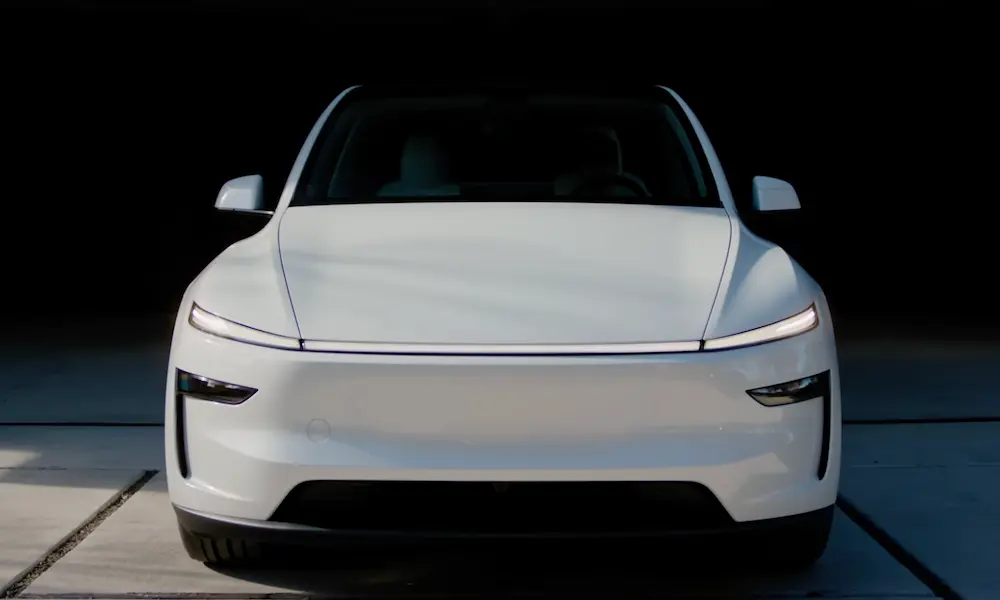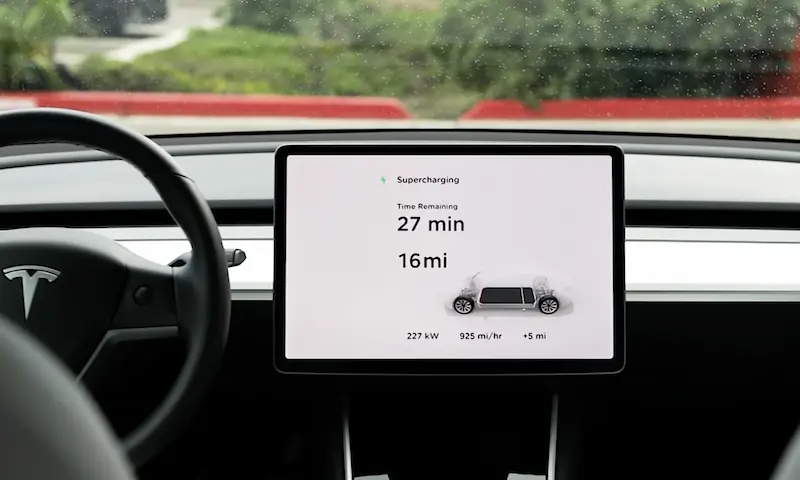Thinking about upgrading your Tesla charging setup at home? You’re at that crossroads where convenience meets cost, and you’re wondering if shelling out for a dedicated Wall Connector makes sense when your car already came with a Mobile Connector. Let’s cut through the confusion and help you figure out if investing in a Tesla home charger is the right move for your lifestyle and wallet.
What Tesla Home Charging Options Are Available?
Tesla offers two main home charging solutions:
Tesla Wall Connector ($420): This is Tesla’s premium home charging solution that gets permanently installed on your wall. It’s sleek, powerful, and specifically designed to deliver the fastest possible home charging for your Tesla.
Mobile Connector ($250): This portable option comes with adaptors for standard outlets and can be taken anywhere. It’s essentially Tesla’s version of a high-quality portable charger.
The difference is more than just price—it’s about capability, convenience, and long-term value.
Charging Speed: How Much Faster Is the Wall Connector?
When it comes to EV charging, speed matters. Here’s how the two options compare:
| Charging Solution | Maximum Power | Range Added Per Hour | Full Charge Time (Model 3) |
|---|---|---|---|
| Wall Connector | 11.5 kW (48A) | Up to 44 miles | ~8 hours |
| Mobile Connector | 7.2 kW (32A) | About 30 miles | ~12 hours |
The Wall Connector delivers nearly 50% faster charging than the Mobile Connector when properly installed. This means you’ll add range more quickly—a significant advantage if you drive a lot or need to recharge quickly between trips.
As one Tesla owner put it: “I never really appreciated how much time I was wasting until I upgraded. Now my car is always ready to go, even after long drives.”
Installation Costs: What’s the Real Price?
The Wall Connector’s $420 price tag is just the beginning. Here’s what you’ll really pay:
Wall Connector total investment:
- Hardware: $420
- Professional installation: $750-$4,100 (varies widely)
- Average total cost: $1,600-$2,000
Mobile Connector considerations:
- Hardware: $250 (if purchasing separately)
- NEMA 14-50 outlet installation: $300-$1,200 (if not already available)
The big variable is your home’s electrical setup. If your panel needs an upgrade or the installation location is far from your electrical panel, costs can balloon quickly. One Reddit user reported spending $3,500 when panel upgrades were needed, while another paid just $600 for a straightforward installation.
Financial Incentives: Tax Credits and Rebates
Don’t pay full price! There are several ways to offset your investment:
Federal Tax Credit: The Alternative Fuel Vehicle Refueling Property Credit (30C) covers 30% of your EV charger costs (both hardware and installation) up to $1,000. This applies through 2032 thanks to the Inflation Reduction Act.
Utility Rebates: Many power companies offer additional incentives. For example, DTE Energy provides $500-$1,000 rebates for Level 2 charger installations.
State Programs: Some states offer generous incentives. Massachusetts and Oregon provide between $2,500-$7,500 in additional incentives for EV infrastructure.
When you factor in these incentives, your effective cost could drop significantly. For example, a $1,800 installation might end up costing just $1,260 after the federal tax credit.
Cost Savings: Home vs. Public Charging
The real value of a home charger becomes clear when you compare charging costs:
| Charging Method | Average Cost/kWh | Cost Per Full Charge (75kWh) | Annual Cost (15,000 miles) |
|---|---|---|---|
| Home Charging | $0.16 | $12 | $720 |
| Public Chargers | $0.34-$0.46 | $25.50-$34.50 | $1,530-$2,070 |
Using national averages from Lending Tree, home charging is about 288% cheaper than public charging. Over a five-year period, you could save $4,050-$6,750 by charging at home—far more than the cost of installing a Wall Connector.
Convenience Factor: Is It Really Worth It?
The Wall Connector offers several quality-of-life improvements:
Permanent Solution: The Wall Connector stays mounted where you need it—no more wrestling with cables or adaptors every night.
Smart Features: Unlike the Mobile Connector, the Wall Connector connects to Wi-Fi for remote monitoring, automatic updates, and power management capabilities.
Weather Resistance: With an IP55 rating, the Wall Connector is designed for indoor or outdoor installation in all weather conditions.
Cable Management: The 24-foot cable comes with a built-in holster system that keeps your charging area tidy.
For many owners, these conveniences alone justify the upgrade. As one Tesla driver explained: “After a year of plugging and unplugging the Mobile Connector every day, I got tired of the hassle. The Wall Connector just works—it’s set and forget.”
Compatibility with Non-Tesla EVs
If you’re thinking about adding another EV to your household, the Wall Connector has you covered:
Tesla’s Universal Wall Connector is designed to work with both Tesla and non-Tesla vehicles. It comes with a built-in J1772 adaptor that makes it compatible with nearly all electric vehicles on the market.
This future-proofing aspect adds significant value, especially as more households become multi-EV families.
Home Value Impact: Investment Perspective
Installing a Wall Connector isn’t just an expense—it’s an investment in your property:
A study by Zillow found that homes with EV chargers sell for about 1.5% more than comparable homes without them. On a $400,000 home, that’s a $6,000 premium—far more than the installation cost.
Real estate agents increasingly report that EV charging infrastructure is becoming a selling point for home buyers, similar to other modern amenities like smart thermostats or solar panels.
Power Management for Multiple Vehicles
If you have or plan to have multiple Teslas, the Wall Connector offers a unique advantage:
The Power Management feature allows up to four Wall Connectors to communicate and share a single circuit. This means you can charge multiple vehicles without upgrading your entire electrical system.
The system intelligently distributes available power based on each vehicle’s needs. When one vehicle completes charging, others automatically receive more power.
Reliability and Warranty Coverage
Reliability matters for something you’ll use daily:
Wall Connector: Comes with a four-year residential warranty and is built for durability with high-quality materials. Independent tests have shown 99.8% uptime.
Mobile Connector: Has a standard one-year warranty and, because it’s handled frequently, is more susceptible to wear and damage over time.
The Wall Connector’s robust construction and longer warranty provide peace of mind that your charging solution will last the life of your vehicle.
Solar Integration: Maximizing Green Energy
If you have or are considering solar panels, the Wall Connector makes an excellent companion:
By scheduling charging through the Tesla app, you can ensure your vehicle charges when your solar production is highest. This can reduce your effective charging cost to nearly zero.
Some users report 70-100% savings on charging costs when pairing solar with smart home charging.
Real User Experiences and Satisfaction
The most telling evidence comes from actual users:
In a poll of Tesla owners on Tesla Motors Club, 87% of Wall Connector users said they would make the same purchase again. Common praise includes reliability, convenience, and charging speed.
One owner noted: “I used the Mobile Connector for six months before upgrading. The difference isn’t just about charging speed—it’s about the entire experience feeling more polished and effortless.”
Making the Decision: Who Should Invest in a Wall Connector?
A Wall Connector makes the most sense for:
Daily commuters: If you drive 40+ miles daily, the faster charging ensures your car is always ready.
Homeowners planning to stay 3+ years: You’ll recoup the investment through convenience and energy savings.
Multi-EV households: The power management features make it ideal for homes with multiple electric vehicles.
Cold climate dwellers: Faster charging means less time spent with extension cords in freezing temperatures.
The Mobile Connector remains adequate for:
Occasional drivers: If you only need to charge once or twice a week, the speed difference is less important.
Renters: The portable nature makes it better for those who might move frequently.
Budget-conscious new owners: If you’re stretching to afford the Tesla itself, the Mobile Connector will serve you fine until you can upgrade.
Installation Considerations: What to Know Before You Buy
If you decide on a Wall Connector, prepare for installation by:
- Getting multiple quotes from licensed electricians who have experience with EV charger installations
- Checking your electrical panel capacity (you’ll need a dedicated 60-amp circuit for maximum performance)
- Considering the distance from your panel to your desired installation location
- Applying for permits if required by your local code
Most installations take 2-4 hours when no panel upgrades are needed.
Long-Term Value: Weighing the Full Picture
When evaluating “is a Tesla home charger worth it,” consider the full equation:
$1,800 (average installation cost) – $540 (tax credit) = $1,260 net cost
With $810/year average savings vs. public charging, you’ll recoup this investment in about 18 months of regular use.
Add in the convenience factor, potential home value increase, and future-proofing benefits, and the Wall Connector becomes an increasingly attractive proposition.
Making Your Tesla Ownership Experience Complete
The Wall Connector transforms Tesla ownership from “I have an electric car” to “I have a complete EV lifestyle.” It eliminates the last friction point in the ownership experience—having to think about charging.
While the Mobile Connector is a serviceable solution, the Wall Connector elevates the charging experience to match the premium nature of the vehicle itself.
For most Tesla owners who plan to keep their vehicle long-term, the Wall Connector isn’t just worth it—it’s an essential part of the ownership experience that pays dividends in time saved, convenience gained, and even money returned through efficiency and home value increase.












